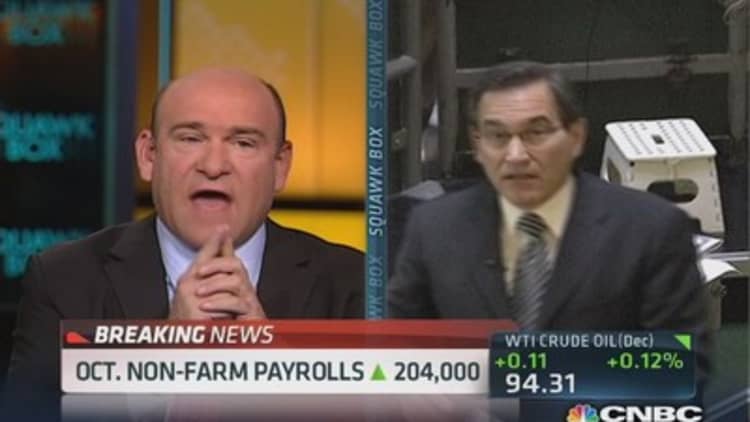U.S. consumer sentiment unexpectedly dipped in November to a near two-year low as lower-income households worried about their job prospects and financial outlooks and negative views of the government lingered, a survey released on Friday showed.
The Thomson Reuters/University of Michigan's preliminary reading on the overall index of consumer sentiment fell to 72.0 in November, its lowest since December 2011. That was lower than both October's final reading of 73.2 and the 74.5 economists had expected this month.
Lower-income households in particular worried about their future financial state. That was a contrast to richer households—those with incomes above $75,000—which felt more optimistic as stock prices increases boosted net wealth gains.
(Read more: Shutdown slowdown?Job creation soars in October)
Nevertheless, consumers largely remained nearly as negative on government policies as they were last month, when a federal government shutdown prompted worries growth would drag.
The government also came close to breaching its borrowing limit, which compounded the crisis and could have pushed the country closer to an historic debt default.
"Following the end of the shutdown, consumers were somewhat more optimistic about the outlook for the economy, but thus far the rebound has been lackluster," survey director Richard Curtin said in a statement.

The survey's gauge of consumer expectations edged down to 62.3, compared to 62.5 in October and expectations of 64.0.
The index of current conditions slipped to 87.2 from 89.9 last month. Analysts had projected a reading of 90.0.
The one-year inflation expectation rose to 3.1 percent from 3.0 percent, while the five-to-10-year inflation outlook gained to 2.9 percent from 2.8 percent.
US consumer spending tepid as households boost savings
U.S. consumer spending increased modestly in September as households boosted their savings and inflation remained benign, pointing to sluggish domestic demand.
The Commerce Department said on Friday consumer spending rose 0.2 percent after advancing 0.3 percent in August.
(Read more: Here's who moves up the economic ladder)
Economists polled by Reuters had expected consumer spending, which accounts for about 70 percent of U.S. economic activity, to gain 0.2 percent in September.
The data was included in Thursday's third-quarter gross domestic product report.
Inflation stayed muted in September, a potential source of concern for Federal Reserve officials. A price index for consumer spending nudged up 0.1 percent, rising by the same margin for three consecutive months.
Over the past 12 months, prices rose 0.9 percent, the smallest advance since April. The index had increased 1.1 percent in August.
Excluding food and energy, the price index for consumer spending also rose 0.1 percent for a third straight month. Core prices were up 1.2 percent from a year ago, after rising by the same margin in August.
Both inflation measures continue to trend below the Fed's 2 percent target. That, combined with the lackluster consumer spending, would argue against the U.S. central bank trimming the $85 billion in bond purchases it is making each month to keep interest rates low.
(Read more: Americans tapped out as holidays approach)
In September, income rose 0.5 percent after rising by the same margin in August. With spending lagging income growth, the saving ratethe percentage of disposable income households are socking awayrose to 4.9 percent. That was the highest since December last year.
—By Reuters

